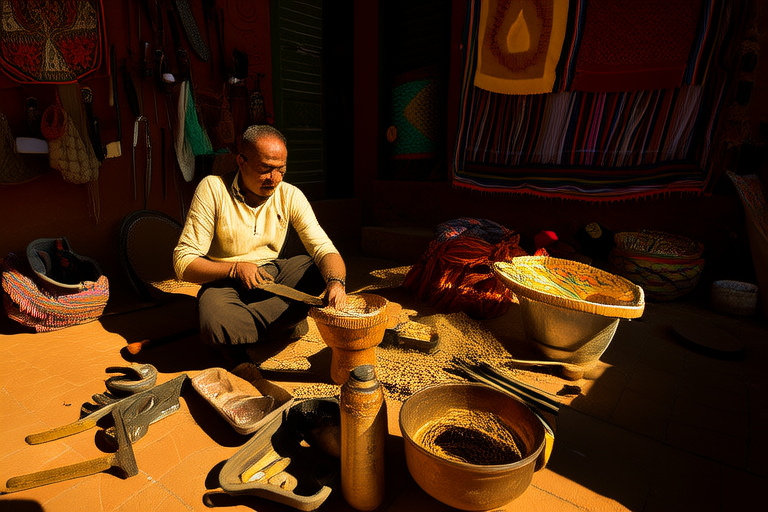Hidden Gems: Exploring the World’s Unique Cultural Practices

Hidden Gems: Exploring the World’s Unique Cultural Practices
Introduction
In an increasingly interconnected world, travel has become more than just a means of leisure; it is a gateway to understanding the rich tapestry of human diversity. One of the most rewarding aspects of traveling is the opportunity to explore unique cultural practices that define communities and their way of life. These traditions, often passed down through generations, offer profound insights into history, values, and beliefs, enriching our experiences and broadening our perspectives. By delving into these hidden gems, we not only deepen our appreciation for the world but also foster cross-cultural connections that transcend borders.
The Japanese Tea Ceremony: A Ritual of Harmony and Mindfulness
Originating in the 9th century, the Japanese tea ceremony, or “chanoyu,” is a meticulously choreographed ritual centered around the preparation and consumption of matcha, a powdered green tea. Rooted in Zen Buddhism, this practice emphasizes principles such as harmony (wa), respect (kei), purity (sei), and tranquility (jaku). Every movement, from the placement of utensils to the whisking of tea, is deliberate and imbued with meaning.
For travelers, participating in a tea ceremony offers a rare glimpse into Japan’s aesthetic sensibilities and philosophical depth. Many tea houses in Kyoto and other cities welcome visitors, providing an immersive experience steeped in tradition. To engage respectfully, guests should observe silence, follow the host’s lead, and express gratitude for the hospitality extended during the ceremony.
Diwali: India’s Festival of Lights
Diwali, celebrated by millions across India and the diaspora, is a vibrant festival symbolizing the triumph of light over darkness and good over evil. The origins of Diwali are rooted in Hindu mythology, particularly the return of Lord Rama to Ayodhya after defeating the demon king Ravana. Homes are adorned with oil lamps, rangoli designs decorate doorsteps, and fireworks illuminate the night sky, creating a dazzling spectacle.
Travelers fortunate enough to witness Diwali can partake in community gatherings, savor traditional sweets like laddoos and barfis, and marvel at the intricate decorations. To show respect, visitors should dress modestly, remove shoes before entering homes, and seek permission before photographing rituals. Engaging with locals during this time fosters meaningful interactions and highlights the warmth of Indian hospitality.
Naadam Festival: Mongolia’s Celebration of Heritage
Held annually in July, the Naadam Festival is a cornerstone of Mongolian culture, showcasing the nation’s nomadic heritage through three main competitions: wrestling, horse racing, and archery. Known locally as “Eriin Gurvan Naadam,” or “Three Manly Games,” the festival dates back to the era of Genghis Khan, who used these skills to train warriors for battle.
For those visiting Mongolia, attending Naadam provides an unparalleled opportunity to witness the country’s rugged spirit and communal pride. Travelers can watch young jockeys race horses across vast steppes, cheer on wrestlers in colorful attire, and admire archers’ precision. Respecting local customs involves dressing appropriately for outdoor events, applauding performances enthusiastically, and refraining from intrusive behavior during sacred moments.
Carnival in Rio de Janeiro: Brazil’s Extravaganza of Music and Dance
Rio de Janeiro’s Carnival is a kaleidoscope of color, rhythm, and energy, drawing millions of spectators each year. This iconic celebration traces its roots to European Catholic traditions, blending them with African influences brought by enslaved people. Samba schools, elaborate floats, and pulsating music dominate the streets, culminating in a grand parade at the Sambadrome.
Visitors eager to immerse themselves in Carnival can join street parties called “blocos” or attend official ticketed events. To ensure respectful engagement, tourists should familiarize themselves with Brazilian customs, avoid excessive drinking, and refrain from objectifying performers. Embracing the festive atmosphere while maintaining cultural sensitivity allows travelers to fully appreciate this global phenomenon.
New Zealand’s Māori Haka: A Powerful Expression of Identity
The haka, a traditional ancestral war dance performed by the Māori people of New Zealand, is a stirring display of strength, unity, and identity. Originally used to intimidate opponents on the battlefield, the haka has evolved into a ceremonial act performed at weddings, funerals, and sporting events. Its thunderous chants, rhythmic stomping, and fierce facial expressions convey deep emotions and cultural pride.
Travelers interested in experiencing the haka can visit marae (Māori meeting grounds) or attend cultural performances offered throughout New Zealand. Showing respect entails listening attentively, avoiding interruptions, and acknowledging the significance of the performance. Understanding the haka’s context enhances appreciation for its role in preserving Māori heritage.
Conclusion
Exploring the world’s unique cultural practices unveils hidden gems that remind us of humanity’s shared yet diverse heritage. Whether sipping tea in Japan, lighting lamps in India, racing horses in Mongolia, dancing in Brazil, or witnessing the haka in New Zealand, these experiences leave indelible impressions that linger long after the journey ends. However, preserving these traditions requires collective effort—both from local communities safeguarding their legacies and from travelers embracing customs with humility and respect.
As you embark on your next adventure, remember that cultural immersion goes beyond sightseeing; it involves connecting with people, learning their stories, and honoring their ways of life. By doing so, you contribute to a world where ancient traditions continue to thrive alongside modernity, ensuring that future generations inherit a richer, more vibrant global culture.